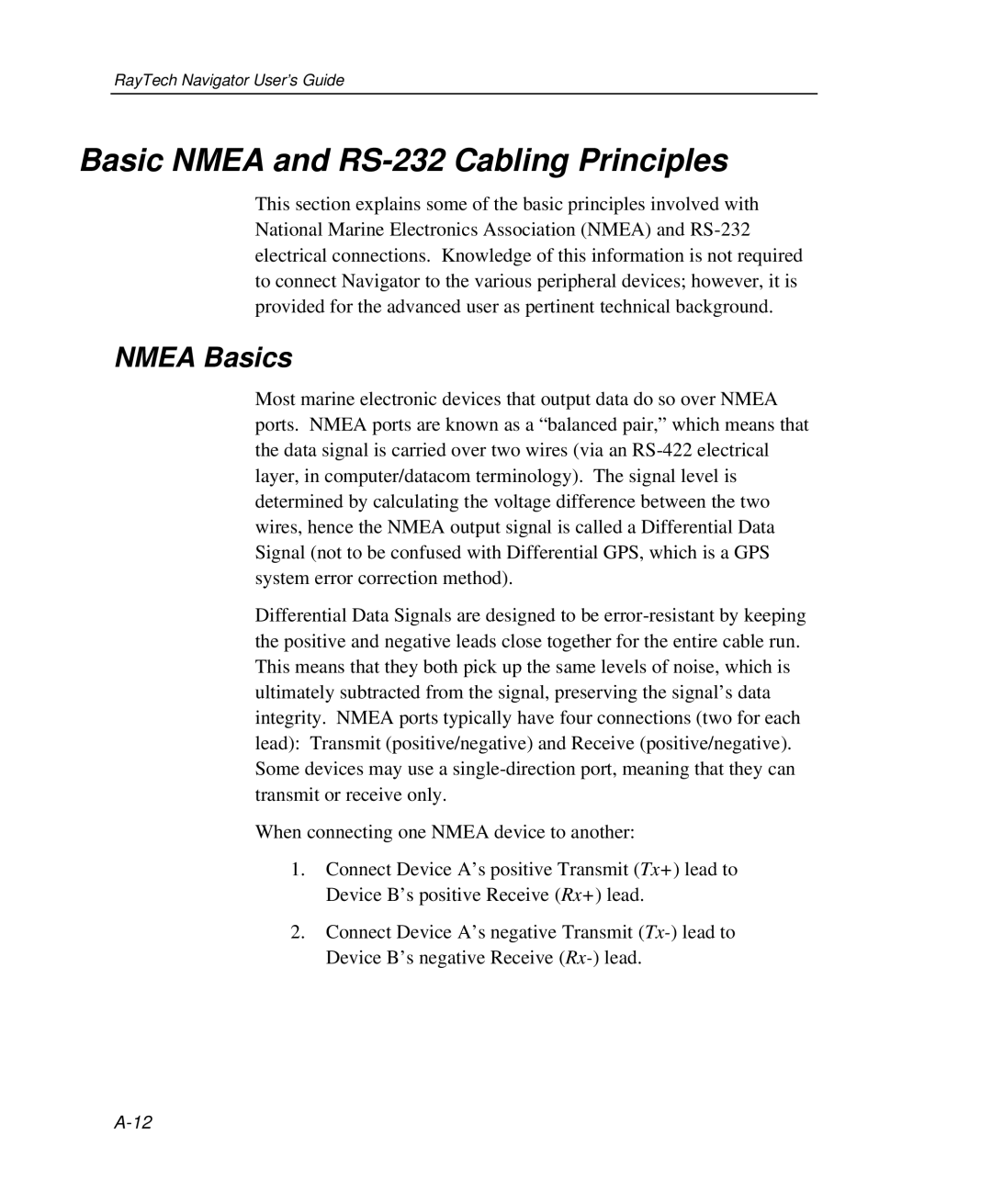RayTech Navigator User’s Guide
Basic NMEA and RS-232 Cabling Principles
This section explains some of the basic principles involved with National Marine Electronics Association (NMEA) and
NMEA Basics
Most marine electronic devices that output data do so over NMEA ports. NMEA ports are known as a “balanced pair,” which means that the data signal is carried over two wires (via an
Differential Data Signals are designed to be
When connecting one NMEA device to another:
1.Connect Device A’s positive Transmit (Tx+) lead to Device B’s positive Receive (Rx+) lead.
2.Connect Device A’s negative Transmit
